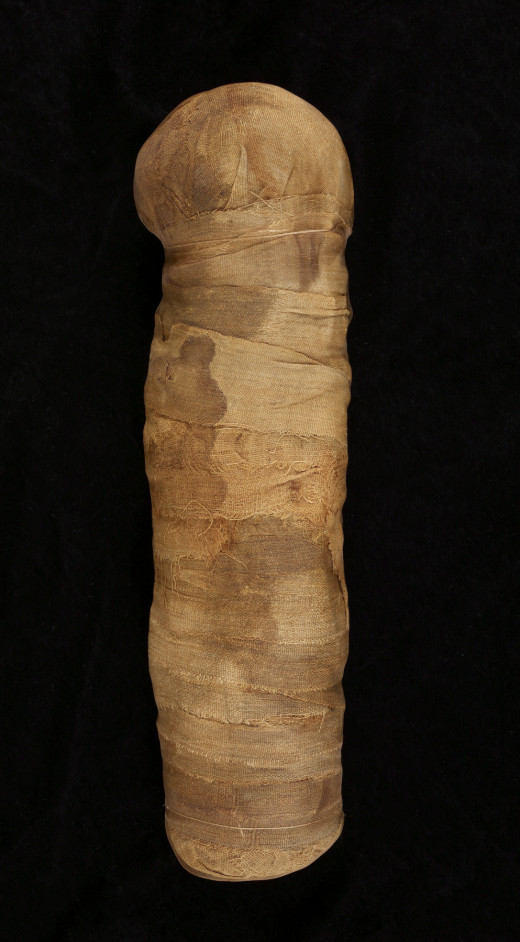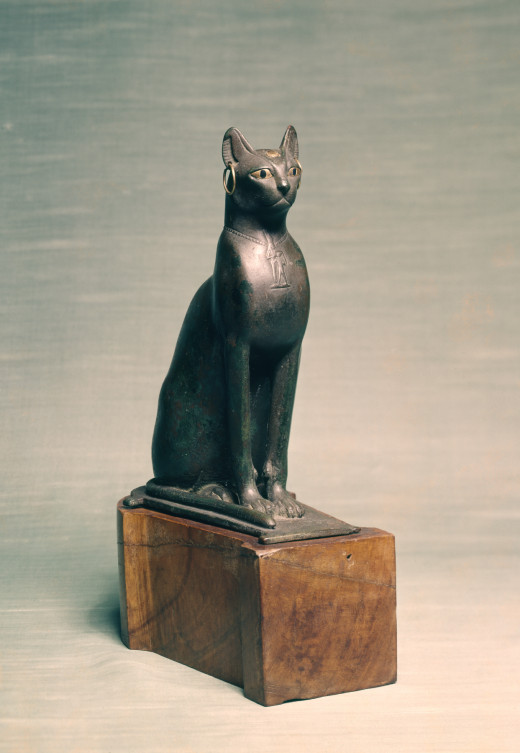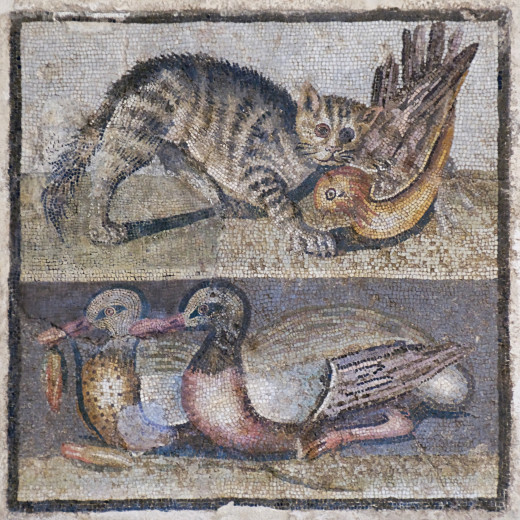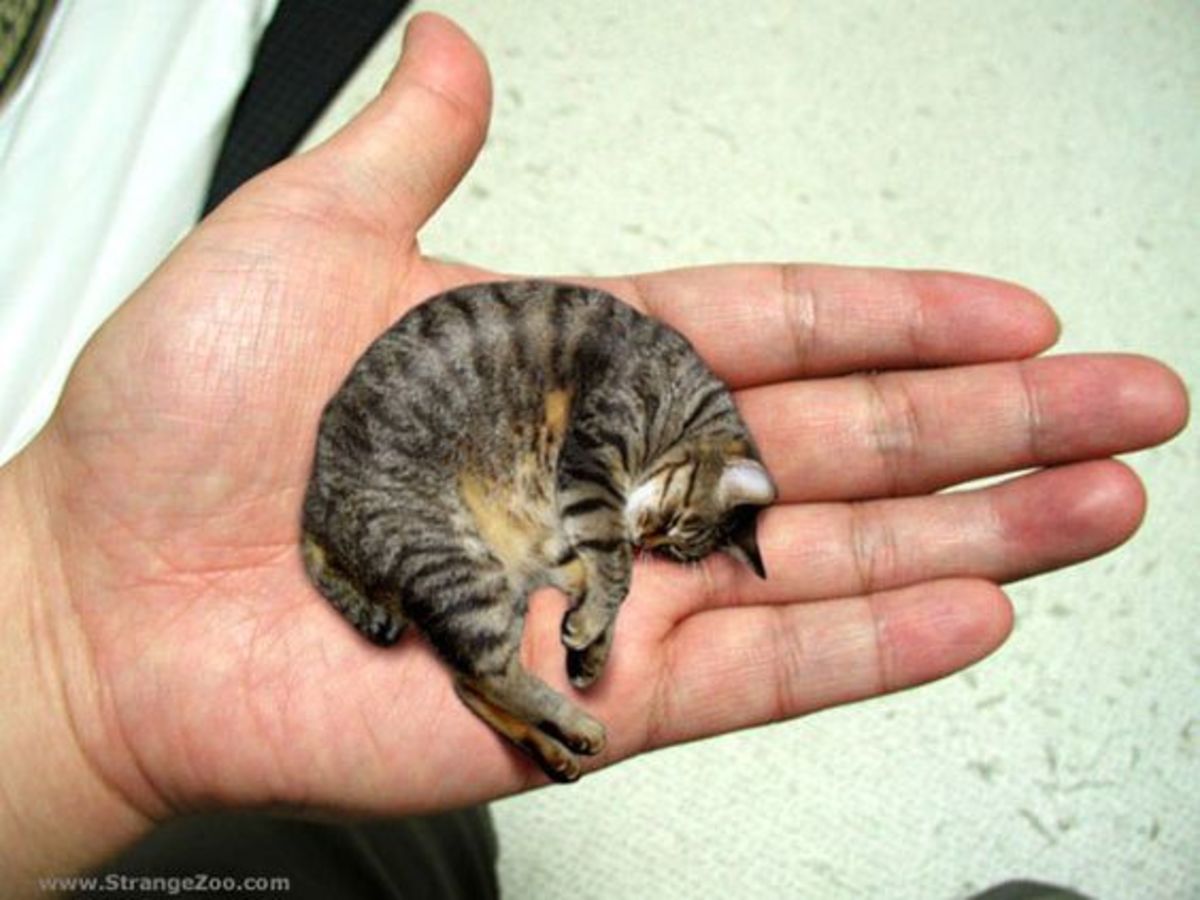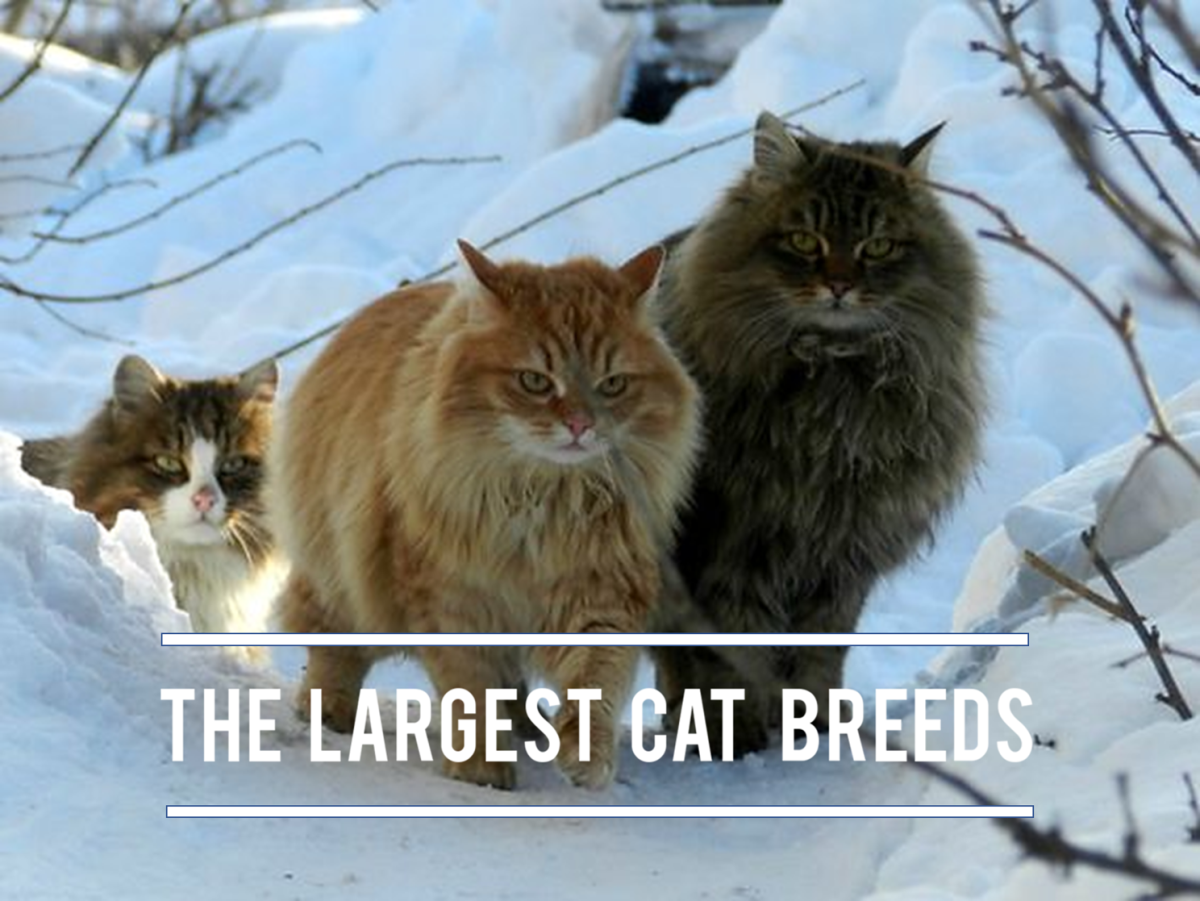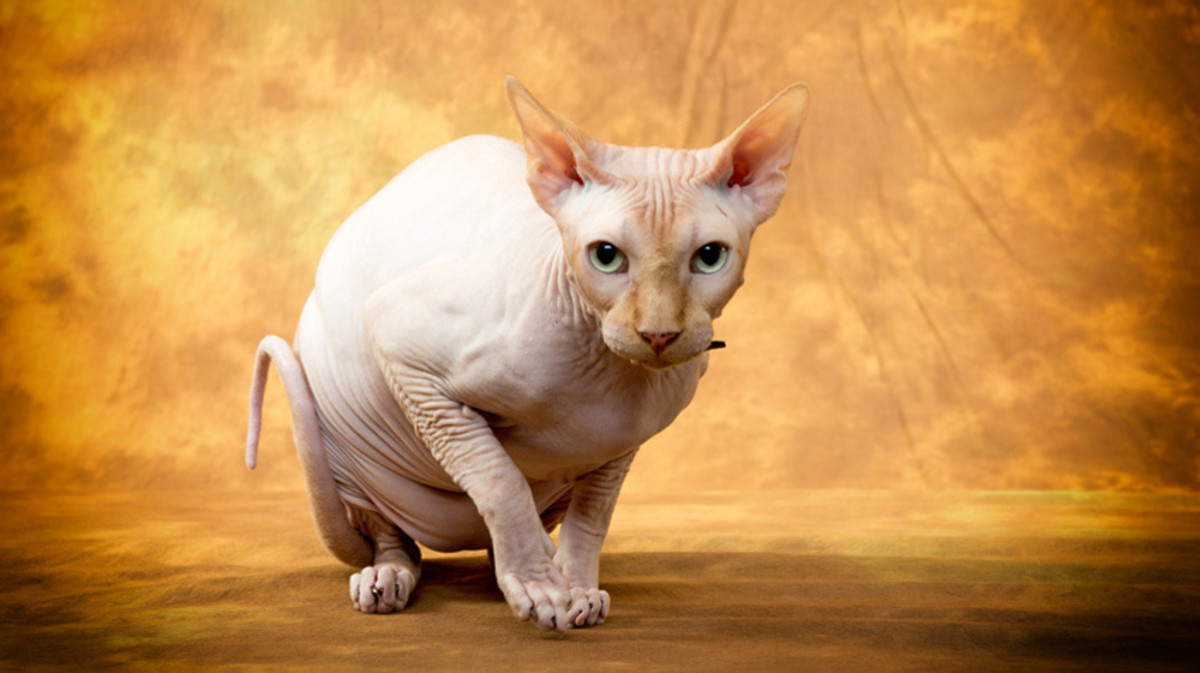Origin of Domestic Cats
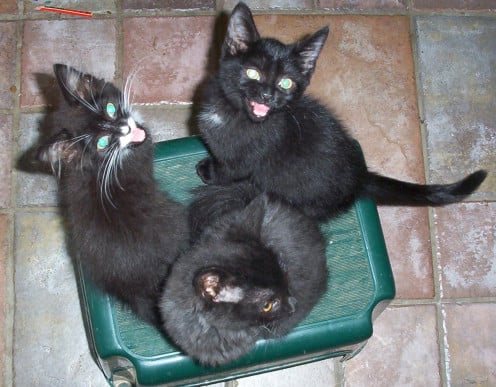
Are you a cat person or a dog person?
Cats became domesticated for very different reasons than dogs. Their desire to form an alliance with humans stemmed from mutual benefit. We provided an easy source of food and they became our exterminators. Even today, our three felines are terrific mousers, keeping the mouse populations down to a bare minimum in our very old century farmhouse. Although they provide love, affection and entertainment to us on their terms only, they still have not lost the hunting prowess of their ancient forebearers.
There is something to the famous line, "Dogs come when they're called; cats take a message and get back to you later." - Mary Bly
I believe there is some truth to the belief that cats domesticated the human race as opposed to the other way around. My three sons were each able to adopt a cat (never ever take three boys and try to come home with only two kittens!). My oldest son chose Arwen, Jarod my middle son picked Tsunami and my youngest chose the only male, Winston. Little did we know that within the year, the cats decided themselves to whom they showed their allegiance. Winston decided that the young boy who chose him was a wise companion to keep. Arwen and Tsunami on the other hand did not remain true. To this day, Arwen prefers to sleep with Jarod. Jarod was the person she adopted while Tsunami adopted Connor as her favourite companion. Our two dogs treat everyone in the house as part of their pack and constantly crave our attention. The three cats on the other hand come to us when they need water or food or perhaps to get their head rubbed. At night, if Tsunami cannot find Connor to sleep with, we all hear her wailing and suffer the consequences.
"Thou art the Great Cat, the avenger of the Gods, and the judge of words, and the president of the sovereign chiefs and the governor of the holy Circle; thou art indeed...the Great Cat." - Inscription on the Royal Tombs at Thebes



The Cat in History
Initially, it was thought that the Egyptians first domesticated the cat around 2000 to 1900 BC.
- It is believed by some experts that by this time Egyptians had already produced a distinct species of cat suggesting that domestication by Egyptians may have happened earlier than previously thought.
- Indeed, the first illustration of a cat wearing a collar was found on an Egyptian tomb in Saggara dating from 2500 to 2350 BC.
- Ancient Egyptians did revere cats attested to by the cat cemetery found in Beni-Hassan containing 300,000 cat mummies.
- Cats were a prominent figure in Egyptian religion.
- Feline goddesses were common in Egyptian mythology including Bastet, the Egyptian goddess of love who had the head of a cat, Sekhmet and other deities.
- Cats also figured prominently in Egyptian art as far back as 4000 years ago.
- Cats were so revered by the Egyptians that to be convicted of killing a cat in Egypt often meant a death sentence for the guilty party.
Ancient Romans also held reverence for the cat.
- It was viewed as the God of Liberty and was the only animal allowed in Roman temples.
- They were kept as mascots by the Roman army and were spread to conquered countries via Roman occupation.
Peoples of the Far East treasured cats due to the protection they provided to treasured manuscripts from rodents.
"The cat has always been associated with the moon. Like the moon it comes to life at night, escaping from humanity and wandering over housetops with its eyes beaming out through the darkness." - Patricia Dale-Green
In the Middle Ages, cats seemed to lose their status as revered and became instead demonized in Europe at least.
- Their nocturnal habits or their sexuality may have created an association of cats with the devil and witchcraft.
- People who had pet cats were often tried and tortured as witches.
- Cats themselves were often put on trial and tortured and killed as witches.
- It was considered at the time, good luck, to bury a cat in the wall of a new building.
- It is very likely that the spread of the bubonic plague was hastened by the decimation of the cat population at that time, as cats were effective exterminators of the rats that carried the plague through their fleas.
"I think all cats are wild. They only act tame if there's a saucer of milk in it for them." - Douglas Adams, discussing feral cats in Last Chance to See (1991)
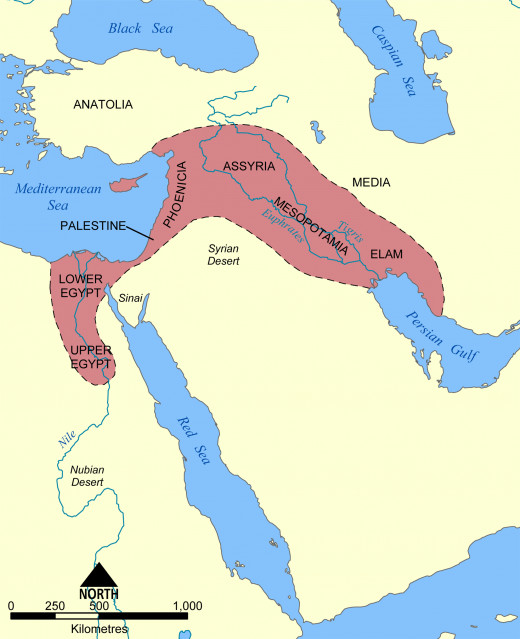
Theory Proposing the Origin of Cats
Dogs were useful to humans when they were hunter-gatherers which explains why their domestication preceeds that of cats. Cats became useful to mankind at the dawn of agricultural civilization, in the Fertile Crescent, when humans remained in one place for long periods of time and tilled the earth to lay down stores of surplus food. Stored food led to rodents being attracted to these storehouses. Naturally, felines were attracted to the abundance of easy prey and humans would have been grateful for the pest control.
- Since even today it is impossible to keep cats inside without closed windows and doors, it would have been impossible to contain cats in the ancient Fertile Crescent where window openings lacked glass panes to keep the animals in.
- Thus, people were probably not actively capturing these animals.
- Ancestors of the wild cat probably domesticated themselves being attracted to the large density of rodents in the human storehouses.
- Thus, farmers were probably the first domesticators of wildcats.
- They would have been valued as exterminators of rodents and other pests of farmer's storehouses and fields.
- It would have been beneficial for the farmers to encourage the presence of these wildcats.
- As these felines became accustomed to humans, they naturally became household companions also as exterminators of rodents which would also invade the homes of settlements.
- Gradually, as people favoured cats with more friendly traits, these docile felines adapted to their new niche leading to the dozens of breeds of cat presently known.
- These cats would have accompanied their humans who gradually spread throughout the ancient world taking the cat along with them.
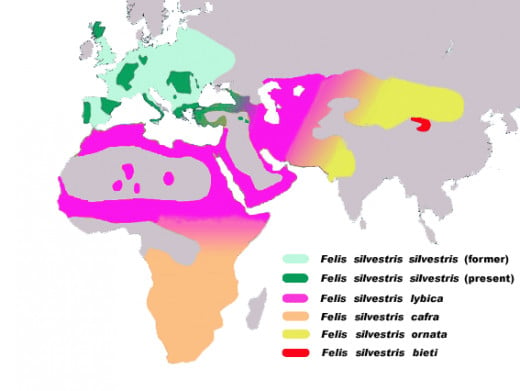
Evolution of the Domestic Cat
Archaeologists have recently discovered the oldest evidence of cat domestication.
- It is now thought that domestication of the cat began at least 9500 years ago because of the discovery of a cat buried in proximity to a human in a Neolithic grave on the island of Cyprus at the Neolithic village of Shillourokambos.
- The remains found were of a complete cat skeleton.
- It was buried about 40 cm from human remains.
- Because the states of preservation of both the cat and the human were similar and because they were buried so close together, it is suggested that both were purposely buried together.
- The state of the remains suggest that this eight month old cat was killed to be buried with the human.
- The recovered remains are from a large cat most closely resembling the African wildcat (Felis silvestris lybica).
- Because felines are not native to the island of Cyprus, the implication is that any cats found on the island were introduced by humans.
- Some researchers have also found evidence including 10,000 year old engravings and pottery depicting cats dating to the late Stone Age, suggesting a much earlier time of domestication for the cat.
- These ancient finds suggest that the cat already had considerable social and possibly religious significance to these people
It has now been determined from genetic studies that all domestic cats are descended from the Middle Eastern wildcat, Felis sylvestris, meaning 'cat of the woods'.
- Cats were first domesticated in the Near East and it was suggested that the domestication process began about 12,000 years ago coinciding with the appearance of the first human agricultural societies.
- A more recent study suggests that all cats can trace their lineage back to five female ancestors from this Middle East region.
- This wildcat obviously had a genetic variance that predisposed some individuals to a more docile nature.
- This Middle Eastern wildcat can still be found in the deserts of Israel, Saudi Arabia and other Middle Eastern countries.
- Due to the genetic variability discovered when investigating mitochondrial DNA in a huge sample population, it is probable that the ancestors of the domestic cat separated from their wild relatives and began living with humans about 130,000 years ago.
- It would have taken at least that long to produce the genetic variability present in today's domestic cats.
- This evidence suggest that perhaps very primitive agricultural settlements existed at that time in the Fertile Crescent.
Site of the late stone age village of Shillourokambos on Cyprus where the oldest known domesticated cat remains were found.
My boys must subconsciously love the mythology of the black cat as lovers of anything frightful! The black cat still has somewhat of a demonic reputation today. Almost never do you see a witch or wizard surrounded by a faithful dog but always present in all witch stories is the companion feline. And many frightening tales have a demonic cat! And yet, the cat is the most popular pet on earth. In houses or apartments they are self-sufficient and cuddly often enough. Their low maintenance makes them ideal for many lifestyles. Throughout history, they have been revered and in many households they are still prized for their independence and grace and for their excellent predatory skill evidence of a wild side still retained from their ancient feline ancestors.
Resources Used
BBC News. DNA traces origin of domestic cat. June 28, 2007.
Handwerk, Brian. National Geographic News. House Cat Origin Traced to Middle Eastern Wildcat Ancestor. June 28, 2007.
Pickrell, John. National Geographic News. Oldest Known Pet Cat? 9,500-Year-Old Burial Found on Cyprus. April 8, 2004.
Rincon, Paul. BBC News. Dig discovery is oldest 'pet cat'. April 8, 2004.
Zax, David. Smithsonian.com. A Brief History of House Cats. July 1, 2007.

